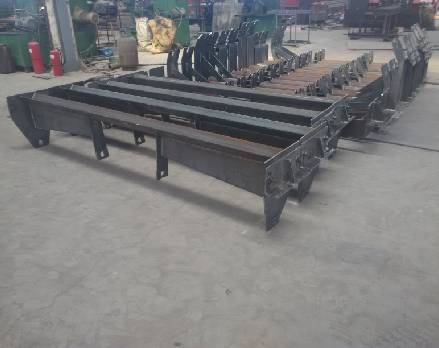 Afrikaans
Afrikaans  Albanian
Albanian  Amharic
Amharic  Arabic
Arabic  Armenian
Armenian  Azerbaijani
Azerbaijani  Basque
Basque  Belarusian
Belarusian  Bengali
Bengali  Bosnian
Bosnian  Bulgarian
Bulgarian  Catalan
Catalan  Cebuano
Cebuano  Corsican
Corsican  Croatian
Croatian  Czech
Czech  Danish
Danish  Dutch
Dutch  English
English  Esperanto
Esperanto  Estonian
Estonian  Finnish
Finnish  French
French  Frisian
Frisian  Galician
Galician  Georgian
Georgian  German
German  Greek
Greek  Gujarati
Gujarati  Haitian Creole
Haitian Creole  hausa
hausa  hawaiian
hawaiian  Hebrew
Hebrew  Hindi
Hindi  Miao
Miao  Hungarian
Hungarian  Icelandic
Icelandic  igbo
igbo  Indonesian
Indonesian  irish
irish  Italian
Italian  Japanese
Japanese  Javanese
Javanese  Kannada
Kannada  kazakh
kazakh  Khmer
Khmer  Rwandese
Rwandese  Korean
Korean  Kurdish
Kurdish  Kyrgyz
Kyrgyz  Lao
Lao  Latin
Latin  Latvian
Latvian  Lithuanian
Lithuanian  Luxembourgish
Luxembourgish  Macedonian
Macedonian  Malgashi
Malgashi  Malay
Malay  Malayalam
Malayalam  Maltese
Maltese  Maori
Maori  Marathi
Marathi  Mongolian
Mongolian  Myanmar
Myanmar  Nepali
Nepali  Norwegian
Norwegian  Norwegian
Norwegian  Occitan
Occitan  Pashto
Pashto  Persian
Persian  Polish
Polish  Portuguese
Portuguese  Punjabi
Punjabi  Romanian
Romanian  Russian
Russian  Samoan
Samoan  Scottish Gaelic
Scottish Gaelic  Serbian
Serbian  Sesotho
Sesotho  Shona
Shona  Sindhi
Sindhi  Sinhala
Sinhala  Slovak
Slovak  Slovenian
Slovenian  Somali
Somali  Spanish
Spanish  Sundanese
Sundanese  Swahili
Swahili  Swedish
Swedish  Tagalog
Tagalog  Tajik
Tajik  Tamil
Tamil  Tatar
Tatar  Telugu
Telugu  Thai
Thai  Turkish
Turkish  Turkmen
Turkmen  Ukrainian
Ukrainian  Urdu
Urdu  Uighur
Uighur  Uzbek
Uzbek  Vietnamese
Vietnamese  Welsh
Welsh  Bantu
Bantu  Yiddish
Yiddish  Yoruba
Yoruba  Zulu
Zulu Components of Conveyor System
Components of a Conveyor System
Conveyor systems are essential in various industries, facilitating the efficient transportation of materials and products. These systems are designed to move items from one location to another with minimal manual intervention, enhancing productivity and ensuring smooth workflow. Understanding the key components of a conveyor system can help in selecting the right type for specific applications.
Components of a Conveyor System
Another crucial component is the drive mechanism, which powers the conveyor belt. Commonly used drive types include electric motors and gearboxes, which are responsible for providing the necessary torque to move the belt. The choice of drive system is essential, as it directly affects the efficiency and speed of the conveyor. Additionally, some systems utilize variable speed drives, allowing operators to adjust the speed based on different operational requirements.
components of conveyor system

The frame of the conveyor system provides structural support and stability. Conveyor frames can be made from various materials, including steel, aluminum, or plastic, depending on the application's environmental conditions and load requirements. The design of the framework must accommodate factors like load weight, belt tension, and the overall layout of the production area.
Another important component is the pulleys or rollers that support and guide the belt. These components ensure smooth movement and aid in the belt's return cycle. Pulleys are critical in maintaining tension and alignment, preventing the belt from slipping or misaligning during operation.
In addition to these primary components, various accessories enhance a conveyor system's functionality. These may include side guides, which help keep items aligned, and sensors that monitor the system's operation. Safety devices, such as emergency stops and guards, are also vital to prevent accidents and ensure a safe working environment.
In conclusion, a conveyor system comprises multiple components that work together to ensure efficient material handling. Understanding these components—belts, drive mechanisms, frames, pulleys, and accessories—can help businesses optimize their operations and improve productivity. By selecting the right configuration and maintaining these elements, companies can effectively streamline their processes and enhance overall efficiency.
-
Revolutionizing Conveyor Reliability with Advanced Rubber Lagging PulleysNewsJul.22,2025
-
Powering Precision and Durability with Expert Manufacturers of Conveyor ComponentsNewsJul.22,2025
-
Optimizing Conveyor Systems with Advanced Conveyor AccessoriesNewsJul.22,2025
-
Maximize Conveyor Efficiency with Quality Conveyor Idler PulleysNewsJul.22,2025
-
Future-Proof Your Conveyor System with High-Performance Polyurethane RollerNewsJul.22,2025
-
Driving Efficiency Forward with Quality Idlers and RollersNewsJul.22,2025





























